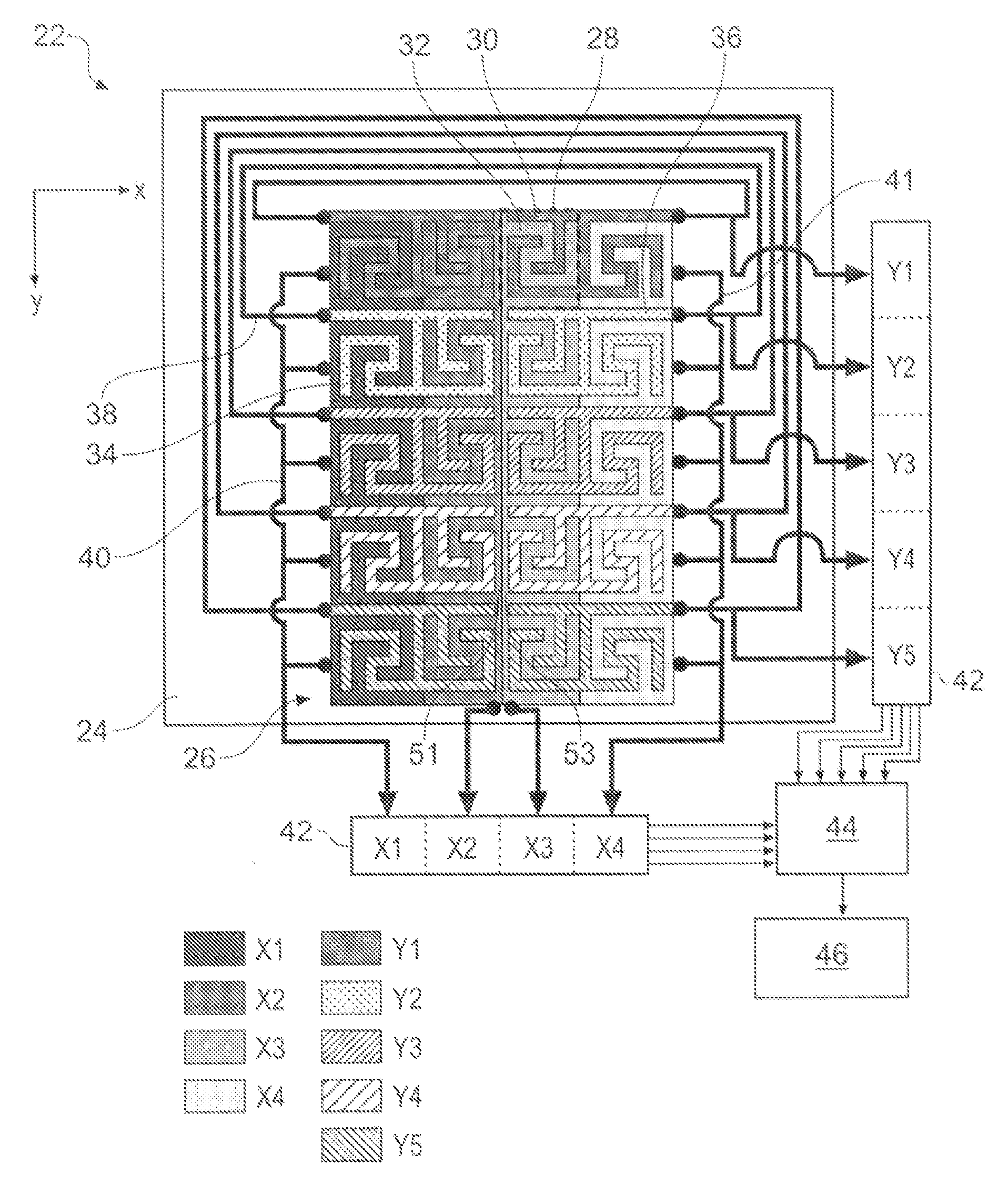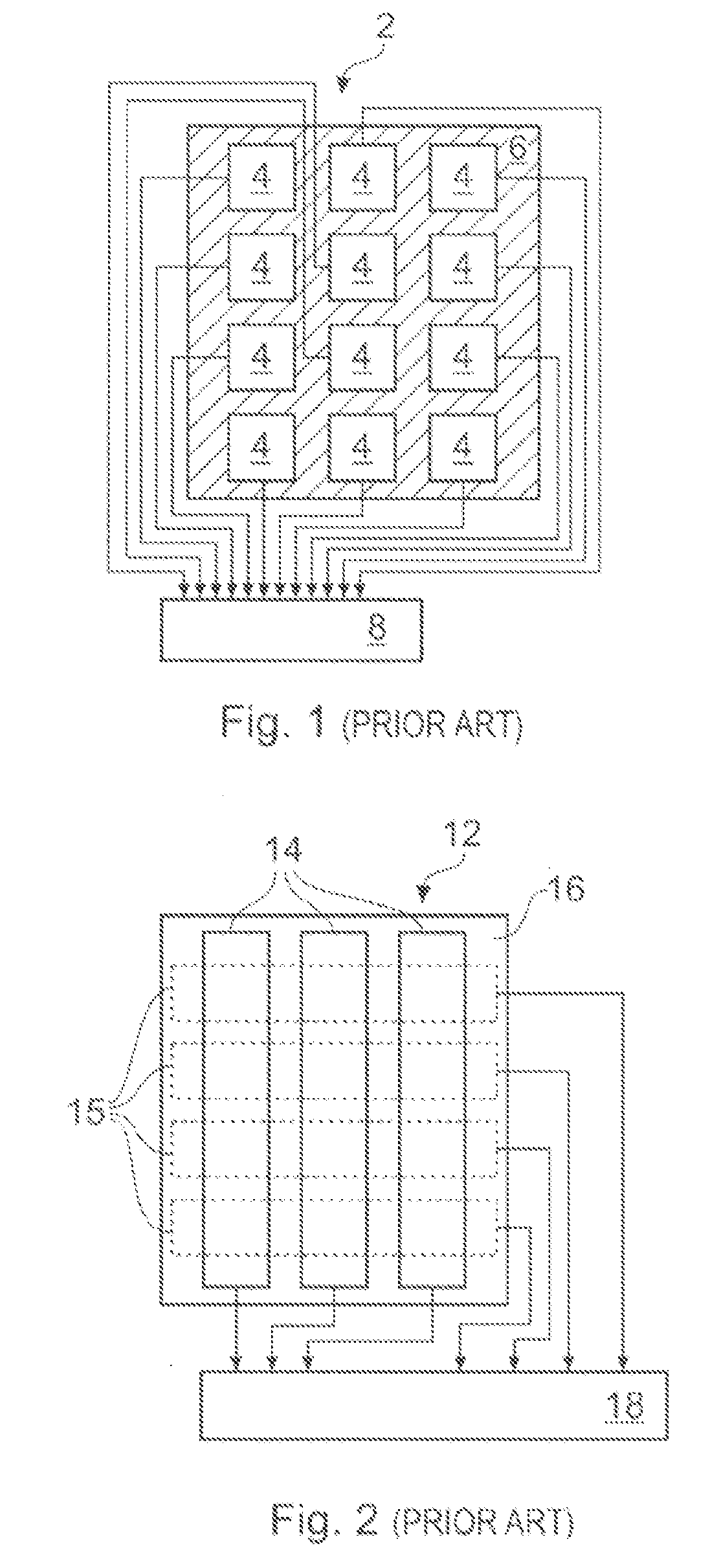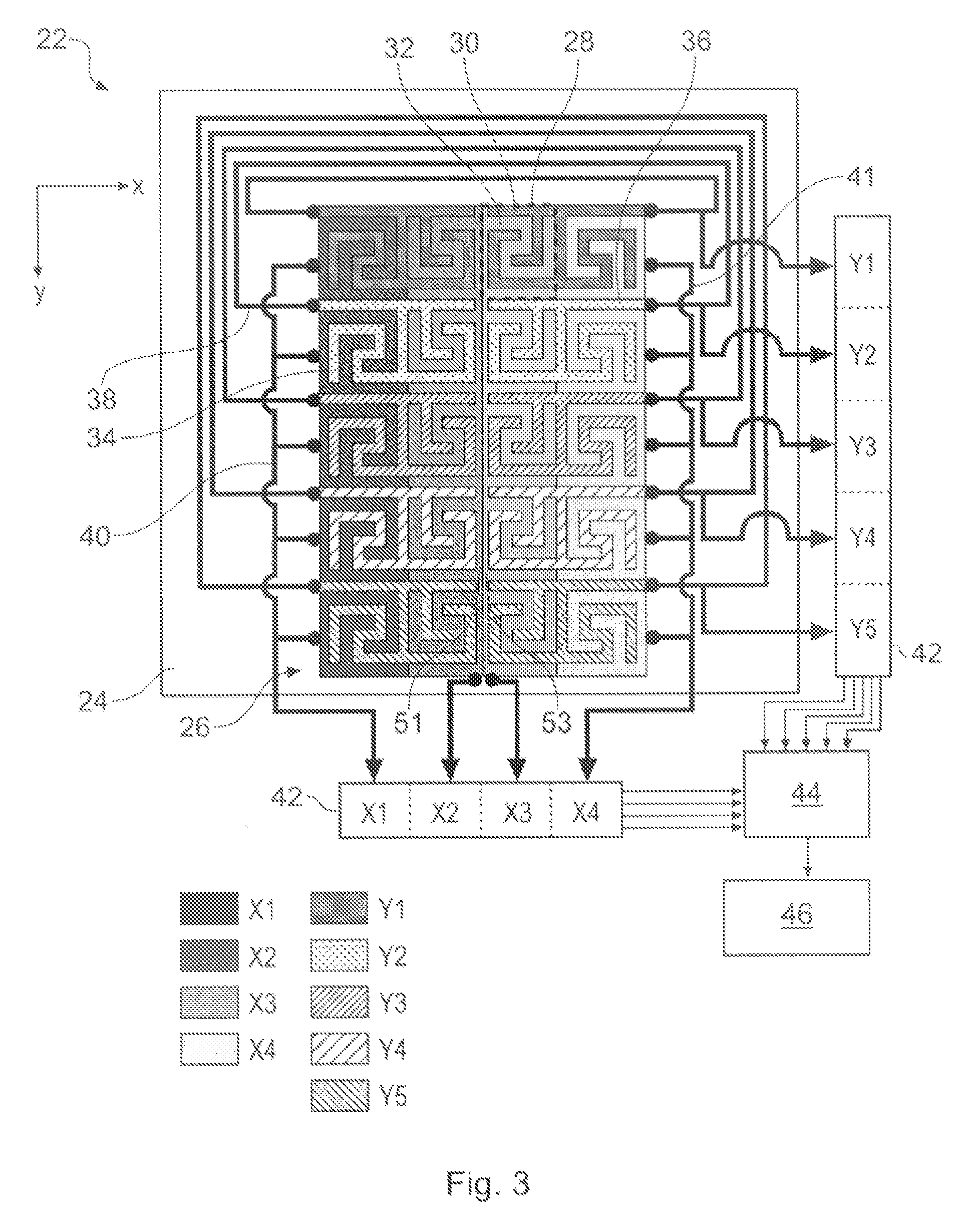Two-Dimensional Position Sensor
a position sensor and two-dimensional technology, applied in the direction of instruments, cathode-ray tube indicators, electric digital data processing, etc., can solve the problems of high production cost, high mounting cost, and direct exposure of the sensing layer to abuse and easily damaged
- Summary
- Abstract
- Description
- Claims
- Application Information
AI Technical Summary
Benefits of technology
Problems solved by technology
Method used
Image
Examples
Embodiment Construction
[0036]FIG. 3 schematically shows in plan view a two-dimensional touch-sensitive capacitive position sensor 22 according to an embodiment of the invention. The position sensor 22 is operable to determine the position of an object along a first (x) and a second (y) direction, the orientation of which are shown towards the top left of the drawing. The sensor 22 comprises a substrate 24 having an arrangement of sensing electrodes 26 mounted thereon. The sensing electrodes 26 define a sensing area within which the position of an object (e.g. a finger or stylus) adjacent the sensor may be determined. The substrate 24 is of a transparent plastics material and the electrodes are formed from a transparent film of Indium Tin Oxide (ITO) deposited on the substrate 24 using conventional techniques. Thus the sensing area of the sensor is transparent and can be placed over a display screen without obscuring what is displayed behind the sensing area. In other examples the position sensor may not b...
PUM
 Login to View More
Login to View More Abstract
Description
Claims
Application Information
 Login to View More
Login to View More - R&D
- Intellectual Property
- Life Sciences
- Materials
- Tech Scout
- Unparalleled Data Quality
- Higher Quality Content
- 60% Fewer Hallucinations
Browse by: Latest US Patents, China's latest patents, Technical Efficacy Thesaurus, Application Domain, Technology Topic, Popular Technical Reports.
© 2025 PatSnap. All rights reserved.Legal|Privacy policy|Modern Slavery Act Transparency Statement|Sitemap|About US| Contact US: help@patsnap.com



